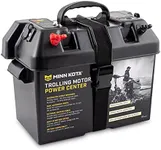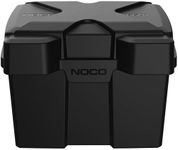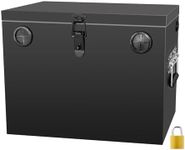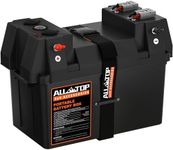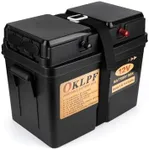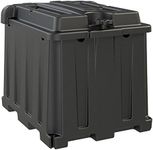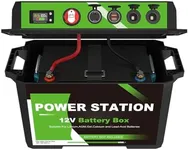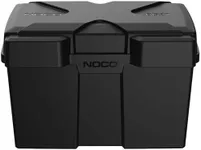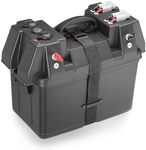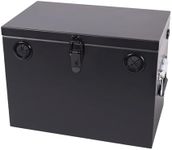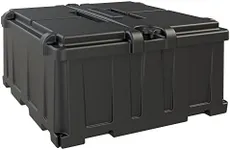Buying Guide for the Best Marine Battery Boxes
Choosing the right marine battery box is crucial for ensuring the safety and longevity of your boat's battery. A marine battery box protects the battery from the harsh marine environment, prevents accidental short circuits, and helps contain any potential leaks. When selecting a marine battery box, it's important to consider several key specifications to ensure it meets your needs and provides adequate protection for your battery.MaterialThe material of the marine battery box is important because it determines the box's durability and resistance to the marine environment. Common materials include plastic and fiberglass. Plastic boxes are lightweight, affordable, and resistant to corrosion, making them suitable for most recreational boating needs. Fiberglass boxes are more durable and can withstand harsher conditions, making them ideal for commercial or heavy-duty use. Choose a material based on the conditions your boat will face and the level of protection you need.
Size and CompatibilitySize and compatibility refer to the dimensions of the battery box and its ability to fit your specific battery. It's crucial to measure your battery and ensure the box you choose can accommodate it comfortably. Battery boxes come in various sizes, so check the dimensions and compare them with your battery's size. A snug fit is important to prevent the battery from moving around, which can cause damage or short circuits. Make sure the box also has enough space for any additional components you may need to store.
VentilationVentilation is important to prevent the buildup of gases that batteries can emit, especially during charging. A well-ventilated battery box will have vents or openings that allow these gases to escape, reducing the risk of explosion or damage. Look for boxes with adequate ventilation features, especially if you are using a lead-acid battery, which is more prone to gas emissions. If you are using a sealed or AGM battery, ventilation is less critical but still beneficial.
Mounting OptionsMounting options refer to the ways you can secure the battery box to your boat. Proper mounting is essential to keep the battery stable and prevent it from shifting during rough seas. Common mounting options include straps, brackets, and screw mounts. Consider the layout of your boat and where you plan to place the battery box. Choose a mounting option that provides a secure fit and is easy to install in your specific location.
WaterproofingWaterproofing is crucial for protecting the battery from water damage, which can occur due to splashes, rain, or submersion. A good marine battery box should have a tight-sealing lid and be made of waterproof materials to keep the battery dry. Look for boxes with rubber gaskets or seals around the lid to ensure a watertight fit. If your boat is frequently exposed to water or you operate in rough conditions, prioritize a highly waterproof box.
Ease of AccessEase of access refers to how easily you can open the battery box to check or maintain the battery. Some boxes have quick-release latches or removable lids that make it simple to access the battery without tools. This is important for regular maintenance, such as checking the battery's charge level or adding water to lead-acid batteries. Choose a box that balances security with ease of access, ensuring you can perform necessary tasks without hassle.
